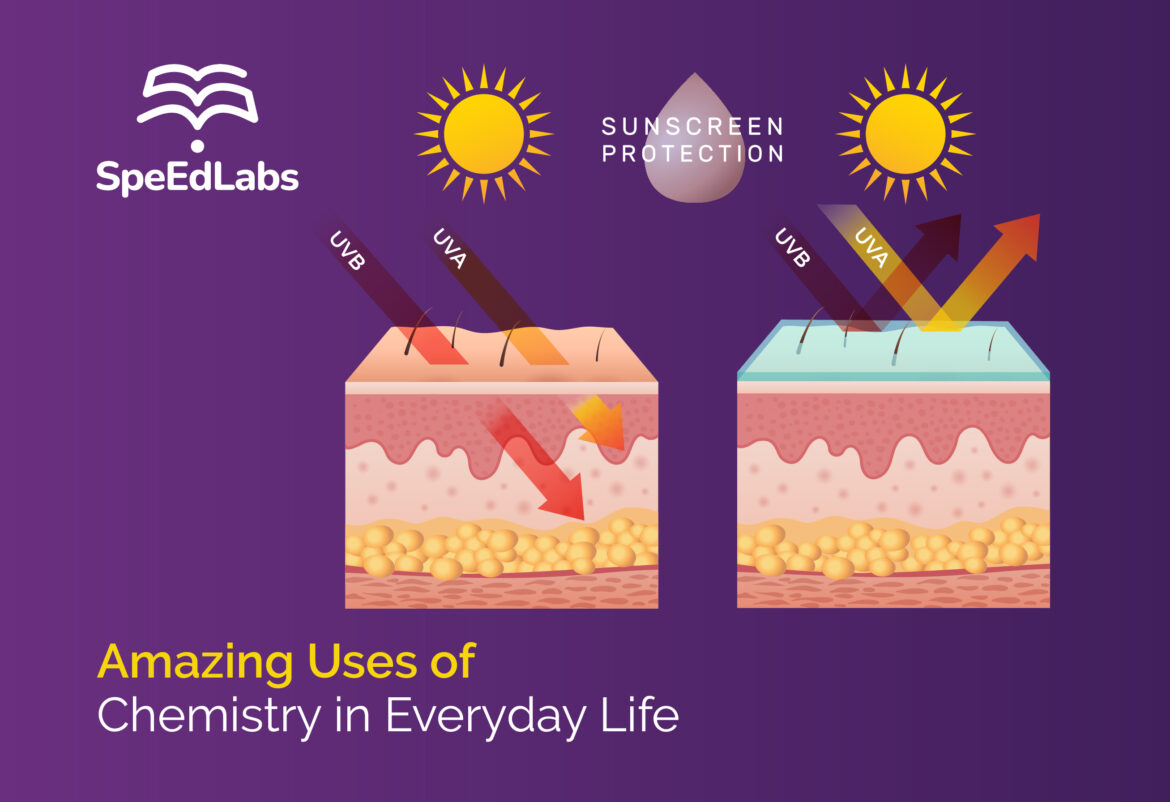Whenever we hear the word Chemistry, we think of chemical compounds, beakers, test tubes, burners, and an evil scientist working on a power potion. Chemistry is a popular branch of science with a wide variety of practical applications beyond merely ‘Chemistry Labs’. This subject contributes so much to making our lives easier and better by providing so many things we use on a daily basis. In everyday life, there is Chemistry.
The wonders of Chemistry lie in the brilliant chemical reactions that take place in the human body. Its wonders can be found in the air we breathe and the food we eat. Chemistry can be found everywhere. Here is a blog that will throw light on the topic if you want to read more about such Chemistry in daily life facts! So let’s examine some overlooked aspects of this subject.
List of Uses of Chemistry in Everyday Life
-
Discoloration of Leaves
Both flora and fauna contain a substantial portion of Chemistry. One of the first concepts we learned about plants was Photosynthesis. Some plants produce their food solely through a chemical process. Chlorophyll is the pigment that gives leaves their green color, and when its amount decreases, leaves become pale yellow.
-
Ice Floating on Water
Ice always floats when we add it to a drink of soda or water. This must have left you wondering, how is this possible? This is due to the fact that the density of the ice is lighter than water. In the class 9 Science syllabus, this concept is explained in detail.
-
Human Body Composition
Millions of various substances make up our body. Not even all of them are known to us. All of these chemical compounds are made up of a small number of constituent elements, including calcium, phosphorus, sulphur, hydrogen, nitrogen, and oxygen.
Different combinations result in different formulas. These chemicals prepare to build an extremely significant structure. Keep in mind that every type of compound our body contains has a purpose. Chemistry may be found in every millimetre of the human body, whether it be building the cell membrane or creating haemoglobin.
-
Common Salt
Salt is a key component for preparing any kind of food. When preparing Indian food, we hardly ever imagine a dish without it. Sodium chloride, commonly known as NaCl in science, is the ideal example to illustrate how chemistry is used in everyday life because it not only enhances the flavour of food but also serves as a fantastic preservative.
-
Hygiene
Previously, we were taught to wash our hands before eating food, and now that Covid-19 has hit us, we must wash them before and after everything that we do. Have you ever questioned whether using a single drop of soap or hand wash would make your hands cleaner? The sodium and potassium fatty acids in soaps serve as an emulsifier and clean your hands. Such a chemical reaction makes cleaning up dirt easier.
-
Shedding Tears While Chopping Onions
While cutting onions, you might have seen people crying. It’s not because they feel sorry for onions, but rather because their eyes water because of a chemical reaction.
It’s time to unravel a wonderful chemistry mystery. When you slice an onion, sulphenic acid is formed from the amino acids in the sulphoxide compounds. This acid produces a volatile gas called propanediol s-oxide. As a result, it stimulates our tear glands, which leads to tears being shed.
-
Emotions
Chemistry does not make you emotional. The mood of an individual is controlled by biochemical compounds. Here are some notes on Chemistry in everyday life. Human emotions are influenced by the hormones released by the brain. Every person produces happy and sad hormones, which keep the body in balance.
In reality, the build-up of specific substances known as cortisols is what causes your body to exhibit signs of stress. Your body releases endorphins, dopamine, serotonin, and oxytocin when you’re happy. Your emotions and mood are regulated by these biological messengers.
-
Food Preservatives
Have you ever wondered why homemade food never lasts more than a day yet ketchup and jam bottles last for almost a year? Try reading the labels of any grocery products the next time. These items contain a chemical that aids in the preservation and restraint of microorganisms such as viruses, bacteria, and fungi. Sodium benzoate, sorbic acid, potassium sorbate, and other compounds are commonly used as food preservatives.
-
Sunscreen
Sunscreen is an essential cosmetic that protects us from dangerous UV radiation and keeps our skin looking natural. Why, then, do we just apply sunscreen and not regular moisturiser? TiO2 and many other organic and inorganic compounds in sunscreen block the sun’s rays and stop them from penetrating deeper layers of skin.
-
Baking
What is your favourite type of bread? Fluffy and Soft? Yes! By adding baking soda to the dough, you make the bread softer and easier to bake. The basic ingredient of baking soda is sodium bicarbonate (NaHCO3).
When this salt breaks down, carbon dioxide is released, causing the food to rise in temperature. The process is known as chemical leavening. It is also used to make idlis, dosas, and dhoklas.
Summary
With the examples above, you can now write science in everyday life essays easily. The iceberg is still below the ocean, whereas we have only reached the tip. It is impossible to deny the impact that chemistry has on our daily life. There are more examples all around you if you pay close attention.
